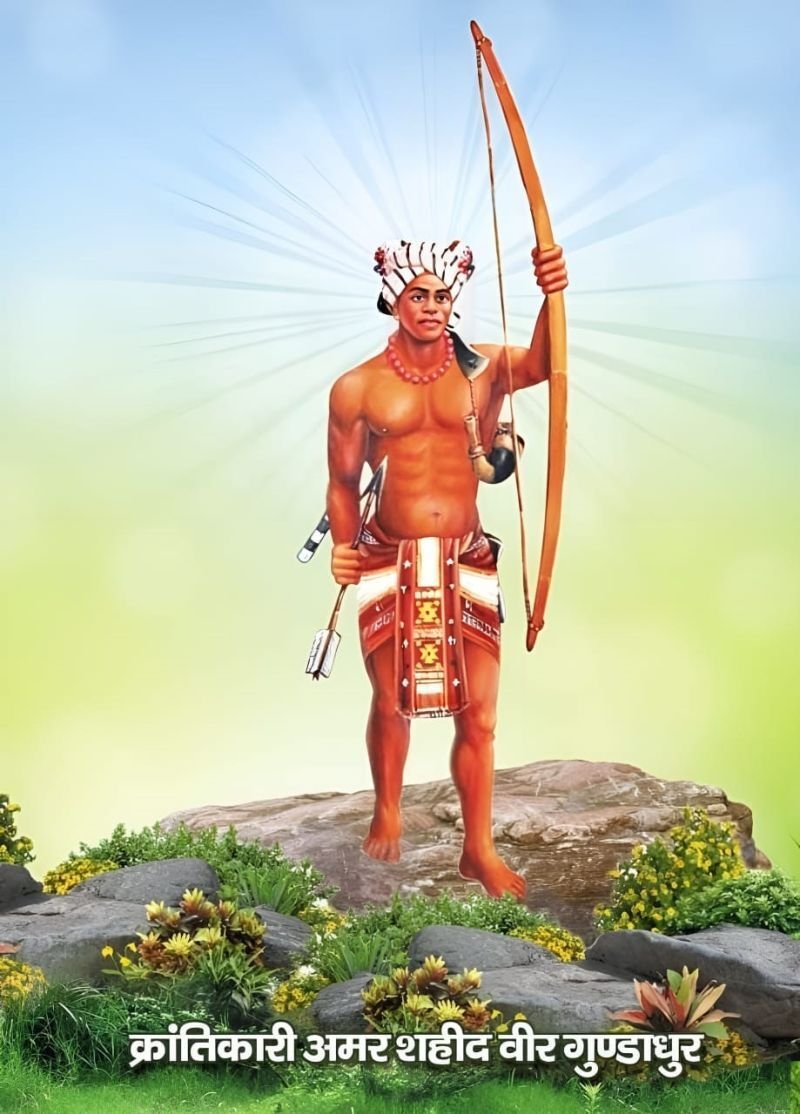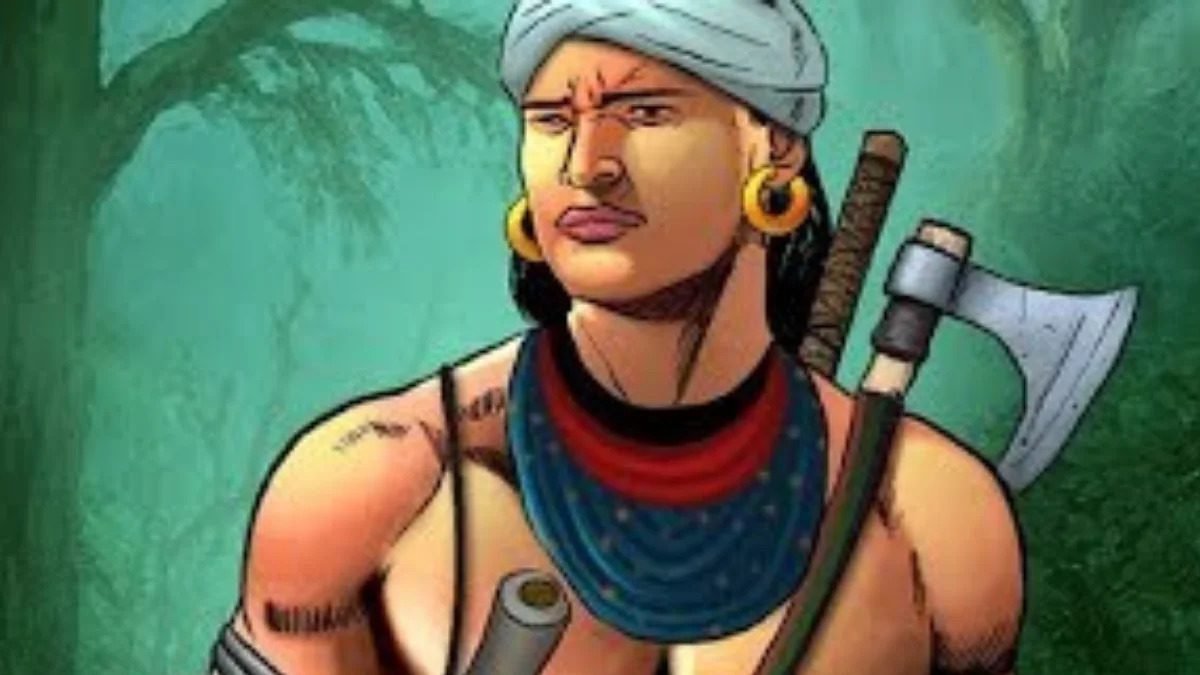Honoring Veer Gundadhur: The Warrior Spirit of Bastar’s Freedom Struggle

Many people gave their immense contributions and sacrifices in the freedom struggle of India. The people who uniquely gave their input and it was written in history forever. When a common man did these things, it was talked way out in the region, but a tribe who gave his support for the country which was initially started from his village invasion had very much impact. Mostly the tribal community have their own culture and traditions to be followed. They have their mini-government which peacefully runs between them. But when someone disturbs their peace, it outrages many conflicts. In those conflicts, there emerges courageous leaders and people whose history will be outstanding in the future. Here we will see about one such brave leader, Shaheed Veer Gundadhur.

Birth Place of Gundadhur:
Gundadhur was born as Baga Dhurva in the tribal community of Bastar, Chhatishgarh. He was also the Tribal leader for the village, Nethanar in Jagdalpur tehsil of the Bastar District. He grew up in a region rich in dense forests, harmonious with nature and culture. The invasion of British colonialization changed their peaceful life and the traditional values the community followed. The British Government started to interrupt the economic condition of the village and oppressed the natural resources of the village.
The Bhumkal Rebellion:
When the British occupied India, every part of the country suffered the most by the act of slavery. Nethanar village was not exclusive for that act. No one would like to be a slave for someone. The tribal community people who were independent and had their government hated this act. They started to oppose the British rule in their village and the country.

During this time when the villagers opposed British rule, the King of the Bastar Kingdom, Rudrapratap was working under the British. Shaheed Gundadhur was the one who opposed the King and the Britishers in favour of the Villagers. This led to a movement called, the Bhumkal Movement in 1910.
The Bhumkal Movement was started to shake the foundation of British rule in the country. Every house of the Bastar Kingdom was delivered red chillies, clay bows and arrows and mango branches to show their opposition to British rule and to save the identity of the Bastar Kingdom. Shaheed Gundadhur was only 35 when he started this movement. With his leadership, the villagers did many courageous acts to oppose British rule. Many British officers were killed by hanging down in the trees. Even some of the British officers were hiding in the forests for some time. Still, this rebellion was a failed movement. But the movement Shaheed Gundadhur started led to many outrages in the future to fight against the British.

In the history of the Bastar rebellion, nearly 25 thousand people sacrificed their lives because of their voices against the British. The tale of Bhumkal is still sung and narrated in the folk songs of Bastar. The tribal community still stop their foot when they hear about the Bhumkal rebellion; it has a significant impact on the people of the Bastar district.
Legacy:
The legacy of Veer Gundadhur is continuing. It is mainly because of his best leadership quality, the forerunner for the people of his community. After the rebellion, British officers also praised him for his bravery and his sacrifice. It was the Britishers who gave the title, Gundadhur for his wonderful life.
- The tribals of the Bastar remember the revolutionary Gundadhar every year and pay tribute to him.
- The Government of Chhatisgarh awards the outstanding player of archery in their field the name: Shaheed Gundadhur award.
- In February 2020, a statue made by the tribal community was unveiled at Kanker, Chhattisgarh by the Chief Minister of Chhattisgarh, Bhupesh Baghel.

Today, Shaheed Veer Gundadhur is celebrated as a hero in Chhattisgarh. His bravery and sacrifice are commemorated through various cultural and educational initiatives aimed at preserving his memory and educating future generations about his contributions. Statues, memorials, and institutions bearing his name serve as reminders of his legacy and the important role he played in the region’s history.


